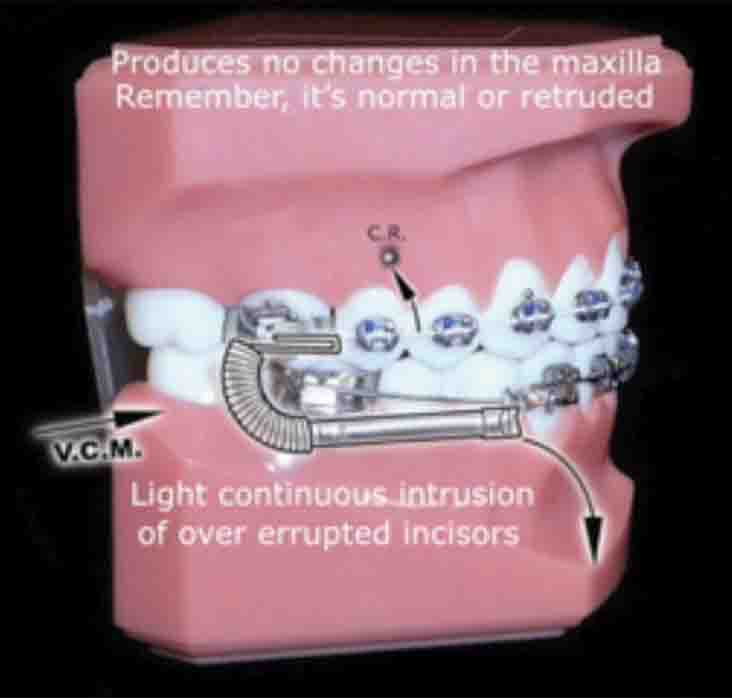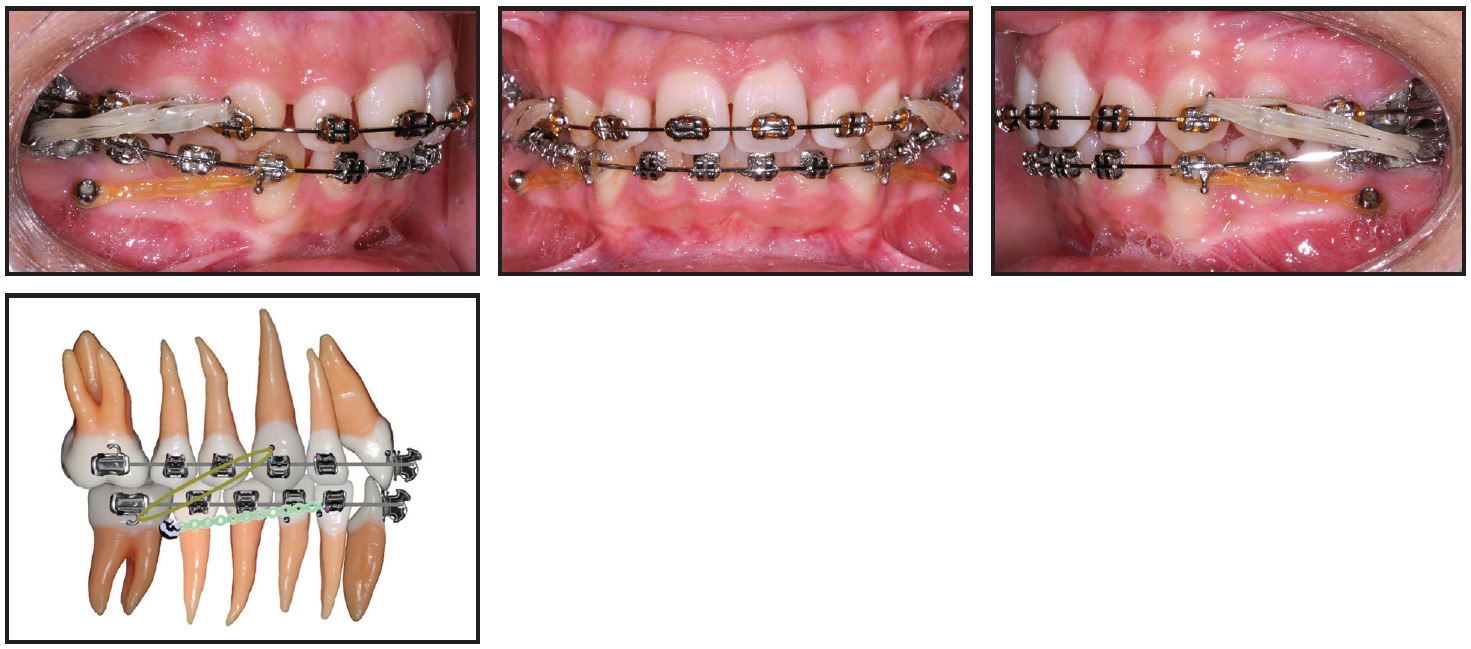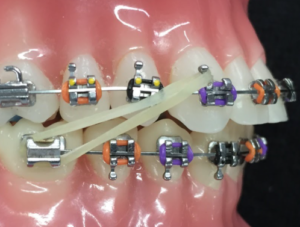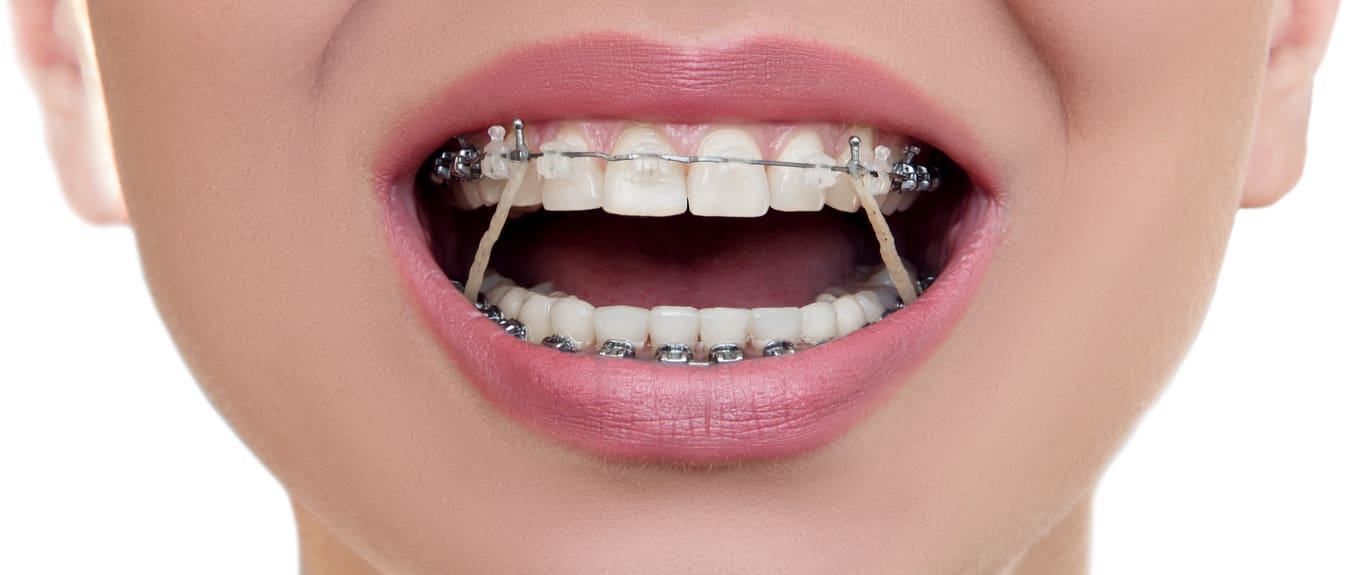class ii elastics effect
4 rows Class II elastics are effective in correcting Class II malocclusions and their effects. Distal movement of the upper teeth and mesial movement of the lower teeth.

The Physics Of Class Ii Correction Orthodontic Practice Us
A total of 50 participants aged 11 to 16 years were selected from a university clinic archive 1-year after treatment and after undergoing 6 months of Class II elastic wear taking pretreatment T0 and posttreatment T1.

. Eight animals served as controls. The aim of this. Class II springs cause tooth intrusion and posterior openbite which does tend to relapse.
Finite Element Models that simulate the effects of Class II elastics on the mandibular arch in six different scenarios using various immobilization methods of the posterior dentition were studied. Farrar WB McCarty WL. Are Class II elastics7 In spite of their popularity8 some authors have attributed several side effects to the use of Class II elasticseg loss of mandibular anchorage proclination of mandibular incisors extrusion of maxil-lary incisors and even worsened smile esthetics because of increased gum exposurethus suggesting minima The class II elastics.
Although Class II elastics have been widely used in the correction of Class II malocclusions there is still a belief that their side effects override the intended objectives. As the present case shows when Class II elastics are. Lateral cephalograms were taken at the start of the experiment and again at the end 23 days later.
Effects upon the mandibular arch. A clinical outline of temporomandib- ular joint diagnosis and treatment. The sample comprised 28 patients a mean age of 1566 2 years for intervention.
Labial tipping of the mandibular incisors and mesialization and extrusion of the mandibular molars. Full-time Class II elastic forces were applied to eight rats in order to evaluate their effects on the growth of the snout and the mandible. Are Class II elastics7 In spite of their popularity8 some authors have attributed several side effects to the use of Class II elasticseg loss of mandibular anchorage proclination of mandibular incisors extrusion of maxil-lary incisors and even worsened smile esthetics because of increased gum exposurethus suggesting minimal.
Effects upon the maxillary archupper incisors are more vertical extrusion and downward movement of anterior occlusal plane backward movement of the upper arch dental distalization. Class II elastics cause tooth eruption which does not tend to relapse. Based on the scientific evidences currently available the treatment effect of Class II elastics is primarily dentoalveolar while functional appliance like Forsus or Herbst appliance may impact the growth of maxilla and mandible in growing patients in spite of the potential controversies.
Steepening of the occlusal plane. 4619 Class II elastics do require some patient compliance but they tend to be more patient-friendly and tolerable and are less expensive than bite-jumping devices. Lower first molar extrusion.
However the length of Class II correction time for elasticsappliance use for Carriere Distalizer 63 22 months was significantly shorter than that for Class II elastics 103 39 months P 0005 while there was no statistical difference between Carriere Distalizer and Forsus 72 27 months groups Table 1 and Fig. Effect on Class II Malocclusion. Class II malocclusion is one of the most common orthodontic conditionsaffecting approximately 30 of the population.
The greater the Class II the greater the side effects from Class II elastics and Class II springs. This article based on measurements of 30 cases illustrates that the effect of the vertical component of force from Class II elastics in reducing the intrusive force generated by. 4 There are many kinds of removable and fixed functional.
Over-eruption of upper incisors and upper canines with phase one Class II elastics can lead to a gummy smile. Multiple studies have reported a lack of strong evidence that the use of Class II elastics results primarily in negative side effects as was previously suggested. Per-element distribution of linear elastic stress-strain and total displacement were computed.
12 Skeletal Class II malocclusion can be caused by maxillary protrusion mandibular retrusion or a combination of both. In the conventional group the results showed that class II elastics were effective in correcting class II malocclusions and their effects were mainly dentoalveolar including lingual tipping retrusion and extrusion of the maxillary incisors. To investigate the effect of Class II intermaxillary elastics on the functional occlusal plane FOP of growing patients.
Class II elastics also make use of the normal mandibular excess by allowing the usual mandibular excess to take place without maxillary mesial dentoalveolar compensation plus a mm or so of actual distal upper buccal segment movement if it is a nonextraction treatment. This prospective randomized clinical trial aimed to evaluate the effect of low-level laser therapy on tooth movement during Class II intermaxillary elastics treatment. Buccal tipping of lower incisors forward movement of the entire mandibular arch.
The class II elastics have different effects6. These results are corroborated by several authors142124262728 Mandibular molars also extruded too due to the accentuated and reversal archwires effects and mesialized as well142627 due to Class II intermaxillary elastics in opposite to Ferreira that found no mandibular molars extrusion. Class II elastics are usually employed in the treatment of excessive overbite and overjet with the Begg technique.
Below are the side effects of Class II elastics. Maximum strain on the PDL and maximum stress on alveolar. The pre- and post-treatment tracings were superimposed on the cranial base to measure alterations in snout.
The effect of Class II elastics on bite opening and the extent of such an effect is uncertain. Class 2 elastics effect. In conclusion this study dem- onstrates that edgewise straight wire orthodontic treat- ment involving extractions and Class II elastics have no effect or little effect ie mild pain lateral to TMJ capsule on TMJ signs and symptoms.
3 Among these mandibular retrusion is the most common. Class II elastics are auxiliary forces that can be classified as active elements in a fixed appliance system1 They have been used in the correction of Class II malocclusion since the early days of orthodontic treatment26 although some undesirable effects can occur depending on their vertical force vectors4610 The vertical force can extrude the mandibular molars and.

Are Class Ii Elastics As Effective As A Functional Appliance A Trial That May Answer This Question Kevin O Brien S Orthodontic Blog

Elastics Class Ii Orthodontic Treatment Youtube

Case Report Jco Online Journal Of Clinical Orthodontics

Intraoral View Of Miniplate Anchored Class Ii Elastics Download Scientific Diagram

Are Class Ii Elastics As Effective As A Functional Appliance A Trial That May Answer This Question Kevin O Brien S Orthodontic Blog

Long And Short Class Ii Elastics Youtube
Treatment Of Class Ii Division 1 Malocclusion With Class Ii Elastics
All About Elastic Rubberbands Land Orthodontics

Direction Of Force For Class Ii Correction A Class Ii Elastics With Download Scientific Diagram